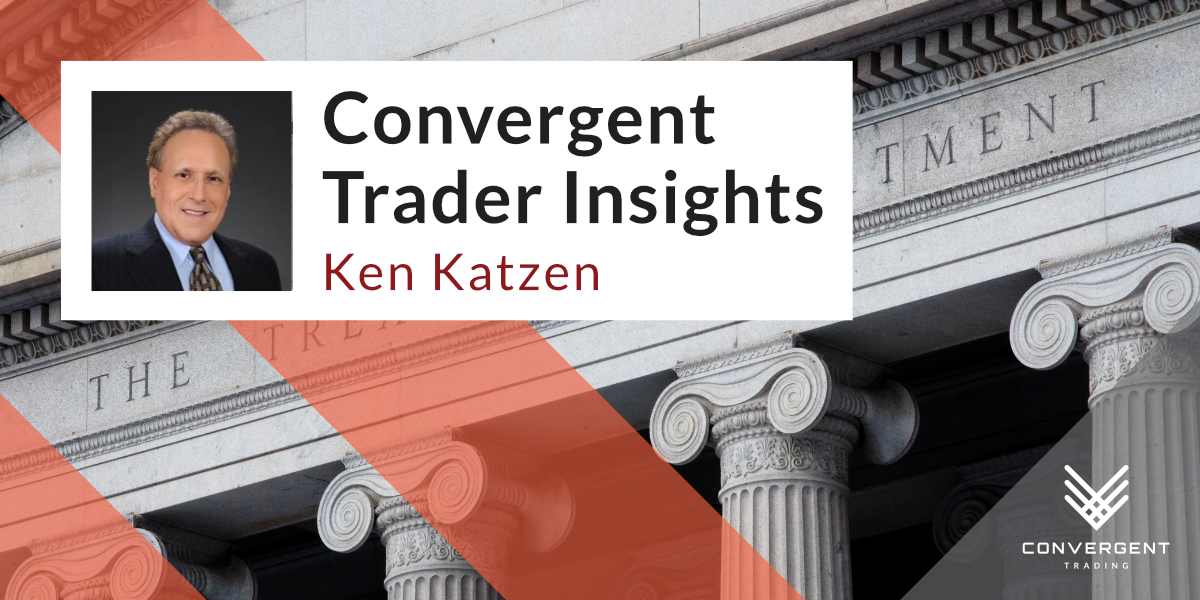4 Elements for Performing Well During Increased Volatility
Understanding When High Volatility Has Arrived
In my view, trading in higher volatility markets is quite different than in more normal regimes, such as we saw for much of last year. But when volatility increases markedly, as it has during the first month of this year, the most important place to begin evaluating how you want to trade is to first realize that volatility has increased. And how to do that? As FT71 has often pointed out, rotations play a key role in evaluating how securities trade—and this is one of the first places we can get clues about whether the markets have become more volatile.
For the product, you trade, has the average rotational length increased? Is there less volume behind each move? Has the average daily range increased? Is price discovery more aggressive than usual? These can be good clues of higher volatility.
4 Elements for Performing Well During Increased Volatility
So, once a trader has identified that they are likely trading in a more volatile market, a common reaction is to reduce size and widen stops. Valuable advice, for sure. But what else can a trader do? It may be helpful to think about four things to consider for dealing with an auction that has become much more impatient.
1. First, take a step back and consider if trading a different product might be more suited to the new climate. Given that a trader has familiarity with other products, moving from, say, the Russell which is notorious for quick moves even in stable markets might not be the best security to trade in the changed conditions. One can still trade a product in the same asset class, such as equities, but may find it clearer to trade a security like the Dow futures, which can have clearer price action.
2. Second, consider trading a different type of security that is less volatile than the corresponding futures product. There are many alternatives to futures instruments, that are much less levered and still have good movement. This includes Exchange Traded Funds (ETFs) and their cousins, the Exchange Traded Notes (ETNs), which often provide excellent volume and good bid/ask spreads. Given the higher leverage and lower margin of futures, a trader would need to do the necessary calculations, and consider account size and the required capital in these alternative instruments.
3. Third, it’s often a good practice to maintain a larger cash balance, in all timeframes, when volatility increases. Not only will this help in keeping a more stable account value—but having “dry powder” can give a trader more compelling opportunities than being leveraged to the hilt.
4. Fourth, and perhaps most important, is to understand and be aware of your emotions. If you know you have FOMO—adding volatility to the mix can create a fertile environment that heightens anger, frustration, resentment, and revenge when dealing in volatile markets. Given this, it’s critical to be aware of your feelings, and keep them in check. It may be tough to realize in the moment, but there might be much better setups and more attractive opportunities when markets take a breather, than when several trades in a row don’t work—and a trader has strong feelings to “get even.”
If you take a step back and think about it: higher volatility often means more opportunity. After all, anyone trading a while can recall the frustration of entering a trade . . . and having it go . . . nowhere, for hours on end. Just make sure you understand, appreciate, and think about the changes to make when volatility increases.
– Ken Katzen (@Longshortorflat, a Head Trader at Convergent Trading)
🔑 Unlock Your Trading Edge!
Join Cohort 5 of the Accelerator Program
🗓️ Program Dates: Friday, April 18th – Friday, May 23rd, 2025
Only 50 seats are available, so sign up now to secure this amazing deal:
⚡ Accelerator Program – Five weeks self-study course & live AMA sessions, followed by one full week of live trading & skills workshops, designed to give you everything you need to trade! ➡️ $500 discount off the full price of $3,000!
⚡ 6 months of Convergent Trading Community membership – all the benefits of the Convergent Trading Community, including the Trade Right Program, to provide a platform for you to put your new skills to work!* ➡️ worth $774!*
⚡ 50% lifetime discount on Convergent Trading memberships**! ➡️ worth $$$!
⚡ BONUS MATERIAL– special training for planning how to trade in the current news-driven environment, tariffs, tweets/truths & all!➡️ worth $299!
➡️ TOTAL PRICE: $4,073 Only $2,500!**

